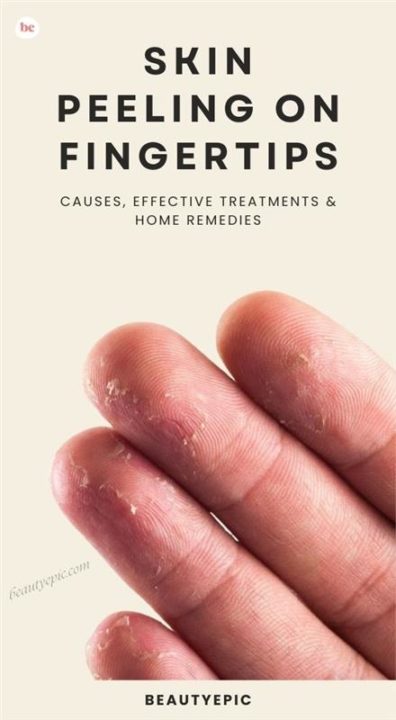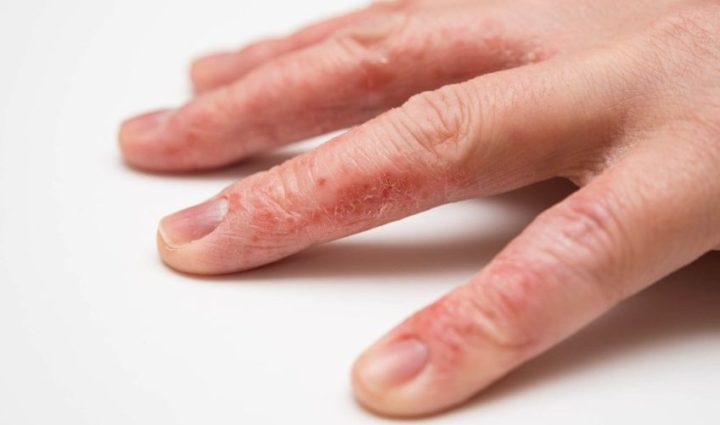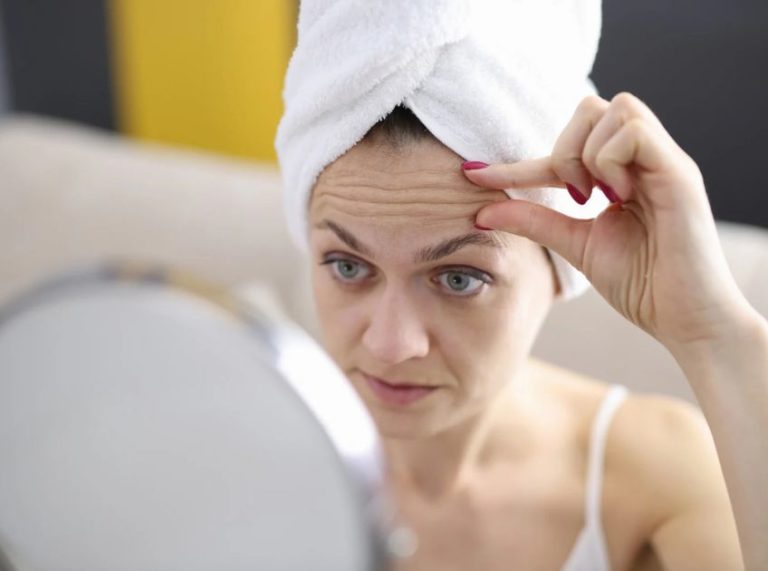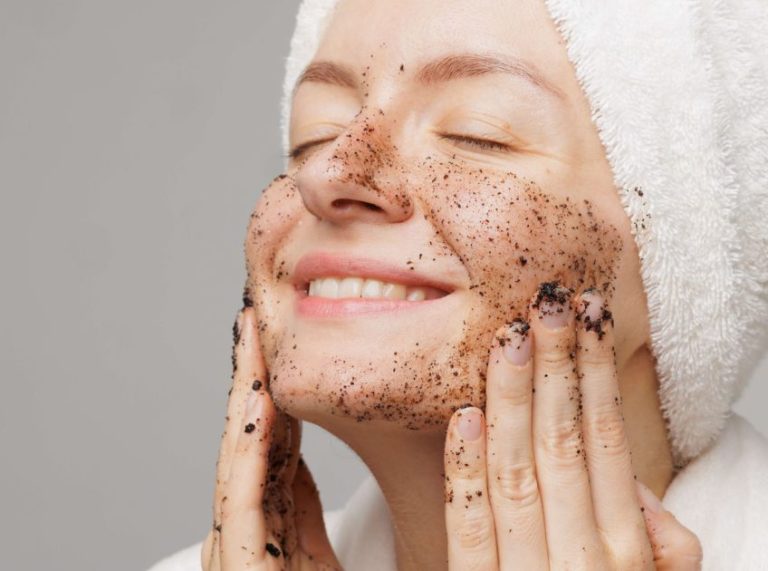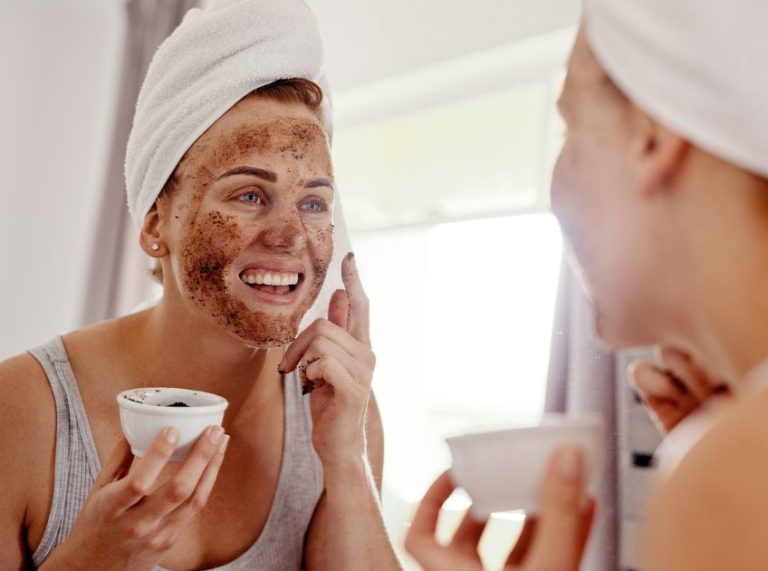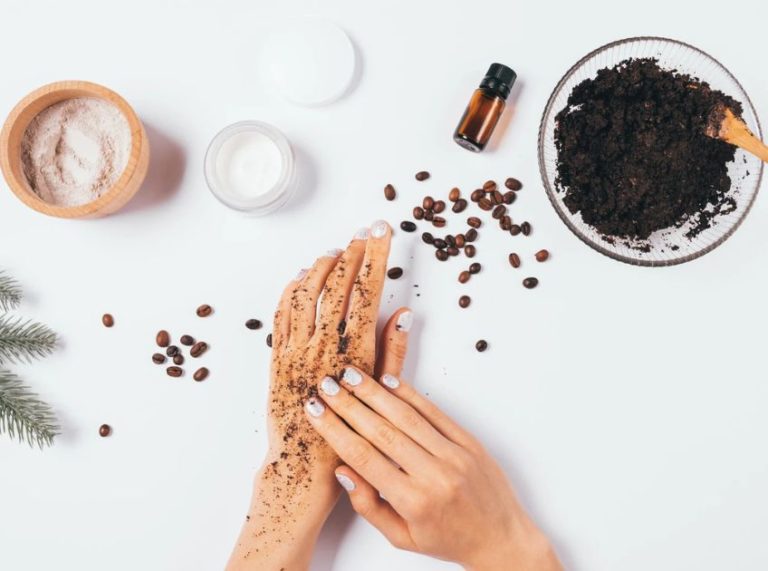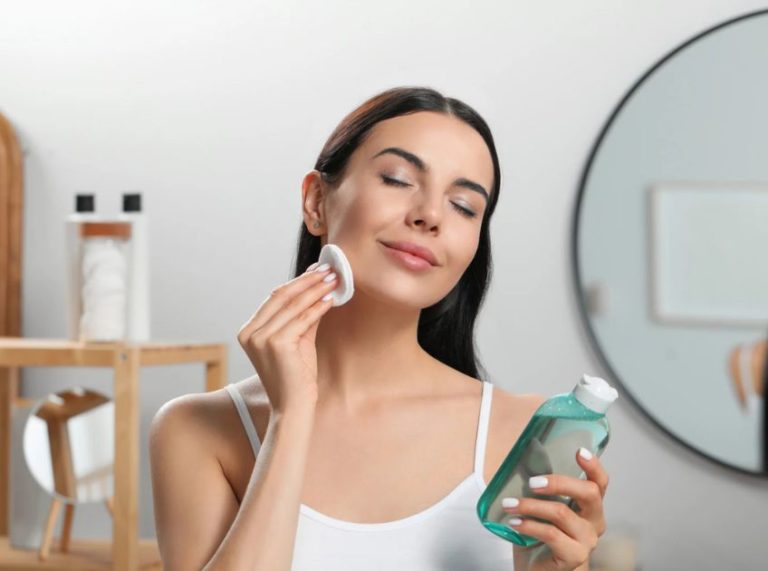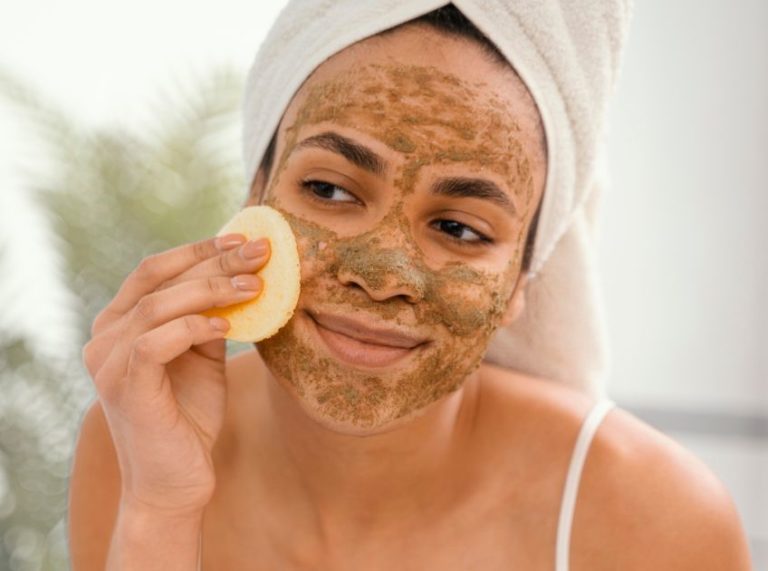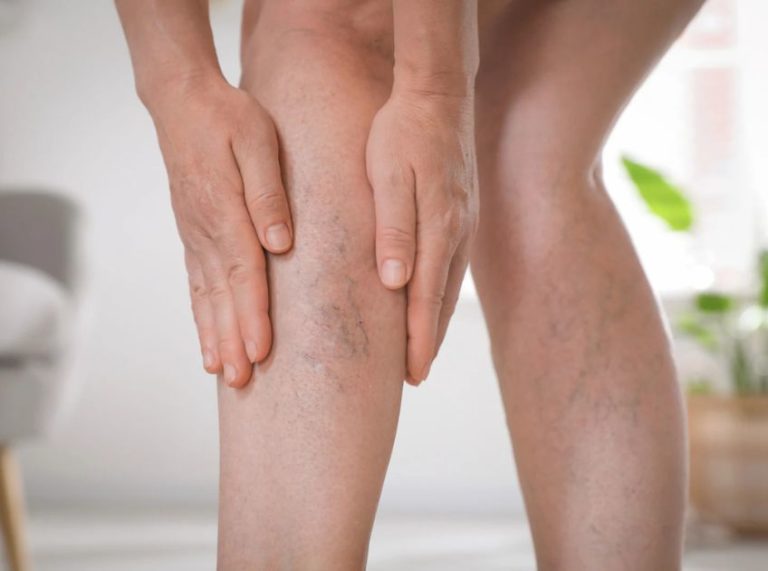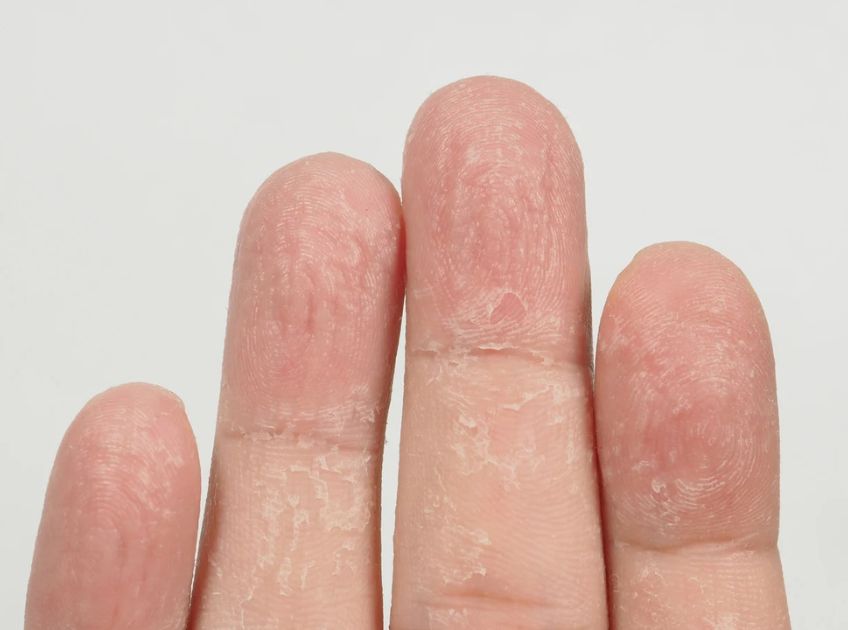
Important: This article is for informational purposes only. Please read our full disclaimer for more details.
Peeling skin on your fingertips can be uncomfortable, unsightly, and sometimes even painful. While it might seem harmless, frequent or severe peeling can indicate underlying issues. Environmental factors, allergic reactions, infections, and certain medical conditions are all possible culprits. Understanding the root cause is essential for proper treatment and prevention.
Environmental Triggers: Everyday Habits That Damage Your Skin
Sometimes, peeling skin isn’t a medical problem but a reaction to external irritants. Common environmental factors include:
- Excessive handwashing – Frequent washing strips natural oils, causing dryness.
- Harsh soaps & detergents – Chemicals in cleaning agents can irritate and dry out the skin.
- Weather conditions – Cold, dry air or extreme heat can lead to chapped and peeling fingertips.
- Exposure to allergens – Certain cosmetics, lotions, or gloves may cause allergic reactions.
Expert Tip: Always moisturize after washing your hands and wear gloves when handling cleaning products.
Medical Causes: When Peeling Indicates Something More Serious
While environmental factors are common, persistent fingertip peeling often signals an underlying medical condition that requires proper diagnosis and treatment. Let’s explore the most frequent medical causes in detail:
1. Eczema (Atopic Dermatitis)
Eczema is one of the leading causes of peeling skin on fingertips. It’s an inflammatory skin condition that weakens the skin’s natural barrier, making it more prone to dryness, flaking, and irritation.
- Symptoms: Redness, itching, small blisters, and cracked skin around fingertips.
- Triggers: Frequent handwashing, detergents, weather changes, and allergens.
- Treatment:
- Use fragrance-free moisturizers with ceramides and colloidal oatmeal.
- Apply mild corticosteroid creams for flare-ups.
- Avoid known irritants and keep your hands hydrated.
Research Insight: A 2022 study published in the Journal of the American Academy of Dermatology found that over 40% of chronic fingertip peeling cases are linked to undiagnosed hand eczema (1).
2. Psoriasis
Psoriasis is an autoimmune condition that accelerates skin cell turnover, causing thickened, scaly, and peeling skin on fingertips.
- Symptoms: Silvery-white scales, rough patches, and sometimes painful fissures on fingertips.
- Triggers: Stress, infections, cold weather, and certain medications.
- Treatment
- Topical treatments like coal tar, salicylic acid, and corticosteroids.
- In severe cases, dermatologists may prescribe phototherapy or biologic medications.
Clinical Evidence: According to a study in Dermatology and Therapy (2021), nail and fingertip psoriasis affects 50% of psoriasis patients, making fingertip peeling a common early symptom (2).
3. Fungal and Bacterial Infections
Microbial infections often cause fingertip peeling, especially if you frequently expose your hands to water, soaps, or chemicals.
- Fungal infections (like tinea manuum) cause dryness, peeling, and itching.
- Bacterial infections can lead to painful swelling, redness, and pus-filled lesions around fingertips.
- Treatment
- Antifungal creams (clotrimazole, terbinafine) for fungal infections.
- Antibiotic ointments or oral medications for bacterial infections.
- Keeping hands clean and dry is crucial for prevention.
Study Highlight: A 2023 review in the Journal of Clinical Dermatology reported that occupational exposure to water and chemicals significantly increases fingertip infections in healthcare and cleaning professionals (3).
4. Vitamin and Nutrient Deficiencies
Nutrient deficiencies can weaken the skin barrier and make fingertips more prone to cracking and peeling.
- Vitamin B3 (Niacin) & B7 (Biotin): Deficiency causes dryness and dermatitis.
- Vitamin C: Lack of vitamin C leads to rough, peeling skin and delayed healing.
- Vitamin E & Zinc: Essential for healthy skin regeneration.
Treatment: A balanced diet rich in citrus fruits, nuts, leafy greens, eggs, and whole grains can help restore skin health. In severe deficiencies, supplements may be prescribed.
Scientific Finding: A 2021 article in Nutrients highlighted that biotin supplementation improved skin hydration and reduced peeling in 73% of participants with chronic fingertip dryness (4).
5. Hyperhidrosis (Excessive Sweating)
Excessive sweating on the palms and fingertips keeps skin constantly damp, leading to irritation and eventual peeling.
- Symptoms: Wet palms, soggy fingertips, and recurrent peeling.
- Treatment
- Use antiperspirant creams for palms.
- Dermatologists may recommend iontophoresis therapy or Botox injections for severe cases.
- Keep fingertips dry using absorbent powders.
6. Kawasaki Disease (Rare but Serious)
In children, peeling fingertips can sometimes be a symptom of Kawasaki disease, an inflammatory condition affecting blood vessels.
- Symptoms: Fever, swollen lymph nodes, red eyes, cracked lips, and fingertip peeling after the fever subsides.
- Treatment: Requires immediate medical intervention to prevent complications.
7. Allergic Contact Dermatitis
If your fingertips peel after touching certain soaps, detergents, latex gloves, or cosmetics, it might be contact dermatitis.
- Symptoms: Redness, itching, blisters, and peeling at the site of contact.
- Treatment:
- Identify and avoid the allergen.
- Use hypoallergenic skincare products.
- Apply mild topical steroids if prescribed.
Dermatology Insight: The American Contact Dermatitis Society notes that contact allergies are responsible for nearly 30% of fingertip peeling cases (5).
When to See a Doctor
Seek medical advice if you notice any of the following:
- Persistent peeling lasting more than 2–3 weeks
- Painful cracks or bleeding
- Signs of infection, like redness, swelling, or pus
- Peeling accompanied by fever or fatigue
A dermatologist can perform tests to identify the cause and prescribe targeted treatments like medicated creams, antifungals, or antihistamines.
Effective Home Remedies & Treatments for Peeling Fingertips
Peeling skin on your fingertips can often be managed at home with the right care. The goal is to restore your skin’s protective barrier, lock in hydration, and prevent further irritation. Below are dermatologist-approved remedies and natural treatments you can try.
1. Moisturize Frequently — The Golden Rule
Dryness is one of the most common causes of fingertip peeling, so deep moisturization is key.
How to do it
- Choose creams rich in ceramides, shea butter, hyaluronic acid, or glycerin.
- Apply moisturizer after every hand wash and before bed.
- For intense overnight hydration:
- Apply a thick layer of cream or petroleum jelly.
- Wear soft cotton gloves overnight to trap moisture.
Dermatology Tip: According to the American Academy of Dermatology, applying a heavy moisturizer within 60 seconds of washing your hands locks in maximum hydration (6).
2. Use Natural Oils for Deep Repair
Natural oils are rich in fatty acids and antioxidants that repair the skin barrier and reduce peeling.
Best oils to try
- Coconut oil → Antibacterial, anti-inflammatory, and deeply moisturizing.
- Sweet almond oil → Soothes irritation and prevents cracking.
- Olive oil → Nourishes and restores elasticity.
How to use
- Warm a teaspoon of oil slightly and massage gently into your fingertips.
- Leave it on overnight for best results.
- Repeat 2–3 times daily until peeling improves.
3. Oatmeal Soak — A Natural Soother
Oatmeal is rich in beta-glucans and antioxidants that calm inflammation and soften peeling skin.
How to prepare
- Mix 2 tablespoons of finely ground oatmeal in a bowl of lukewarm water.
- Soak your fingertips for 10–15 minutes.
- Pat dry gently and apply moisturizer immediately.
Scientific Insight: A study published in the Journal of Drugs in Dermatology (2020) found that colloidal oatmeal significantly improves skin barrier function and reduces irritation (7).
4. Honey Therapy — Nature’s Antimicrobial Moisturizer
Honey is a natural humectant that attracts moisture and has antibacterial properties to prevent infections.
How to use honey for fingertip peeling
- Apply a thin layer of raw honey directly to the peeling area.
- Leave it on for 20 minutes before rinsing with lukewarm water.
- Follow up with a fragrance-free moisturizer.
For better results, combine honey + olive oil for a double hydration boost.
5. Aloe Vera Gel — Instant Cooling & Healing
Aloe vera is known for its soothing, anti-inflammatory, and hydrating properties.
How to apply
- Scoop out fresh aloe vera gel from the leaf.
- Massage gently into your fingertips.
- Let it absorb for 20–30 minutes or leave it overnight.
Study Highlight: Research published in Phytotherapy Research (2019) confirmed that aloe vera enhances skin regeneration and reduces peeling caused by dryness or mild irritation (8).
6. Avoid Harsh Soaps & Hot Water
Excessive exposure to hot water and chemical-laden soaps strips natural oils and worsens peeling.
What to do instead
- Use mild, fragrance-free cleansers.
- Wash your hands with lukewarm water instead of hot water.
- Always apply moisturizer right after drying your hands.
7. Protect Your Hands
Prevention plays a huge role in healing fingertip peeling:
- Wear gloves while washing dishes, cleaning, or handling chemicals.
- Avoid direct contact with detergents and strong cleaning products.
- Keep a travel-size moisturizer in your bag to reapply during the day.
8. DIY Vitamin-Rich Hand Mask
If your fingertip peeling is due to vitamin deficiencies or dryness, a DIY hand mask can speed up healing.
Ingredients
- 1 tablespoon avocado pulp (rich in vitamin E)
- 1 teaspoon honey
- A few drops of almond oil
How to use
- Mix the ingredients into a smooth paste.
- Apply evenly over fingertips and hands.
- Leave on for 20 minutes.
- Rinse with lukewarm water and moisturize.
9. Hydrate From the Inside Out
Sometimes, peeling fingertips is a sign of dehydration or nutrient imbalance.
- Drink at least 8 glasses of water daily.
- Include omega-3 fatty acids from fish, walnuts, and chia seeds.
- Eat foods rich in vitamins A, C, E, and biotin to improve skin repair.
10. Over-the-Counter (OTC) Treatments
If natural remedies don’t work, consider OTC solutions:
- Urea-based creams → Excellent for rough, peeling skin.
- Hydrocortisone creams → Reduce inflammation and irritation.
- Antifungal ointments → If a mild fungal infection is suspected.
Always do a patch test before using any new product to avoid allergic reactions.
Expert Tips for Faster Healing
- Moisturize at least 5–6 times a day.
- Use petroleum jelly at night for deep repair.
- Don’t peel off loose skin — trim gently with sanitized scissors.
- Avoid alcohol-based sanitizers as they worsen dryness.
- If peeling persists beyond 2–3 weeks, see a dermatologist.
Frequently Asked Questions (FAQ’S)
1. Can stress cause peeling fingertips?
A. Yes, stress can trigger eczema flare-ups and sweating, both of which may lead to peeling skin.
2. Which vitamin deficiency causes fingertip peeling?
A. Deficiencies in vitamin B3, B7 (biotin), C, and E can lead to dryness, cracking, and peeling.
3. Can peeling fingertips be a sign of infection?
A. Yes. If peeling is accompanied by redness, swelling, or pus, it could indicate a bacterial or fungal infection and needs medical treatment.
Peeling skin on your fingertips is usually harmless and can often be managed with proper hydration, gentle skincare, and avoiding harsh irritants. However, persistent or painful peeling could signal an underlying medical condition that requires professional attention. By understanding the causes and taking preventive measures, you can restore your fingertips to a healthy, smooth state.
